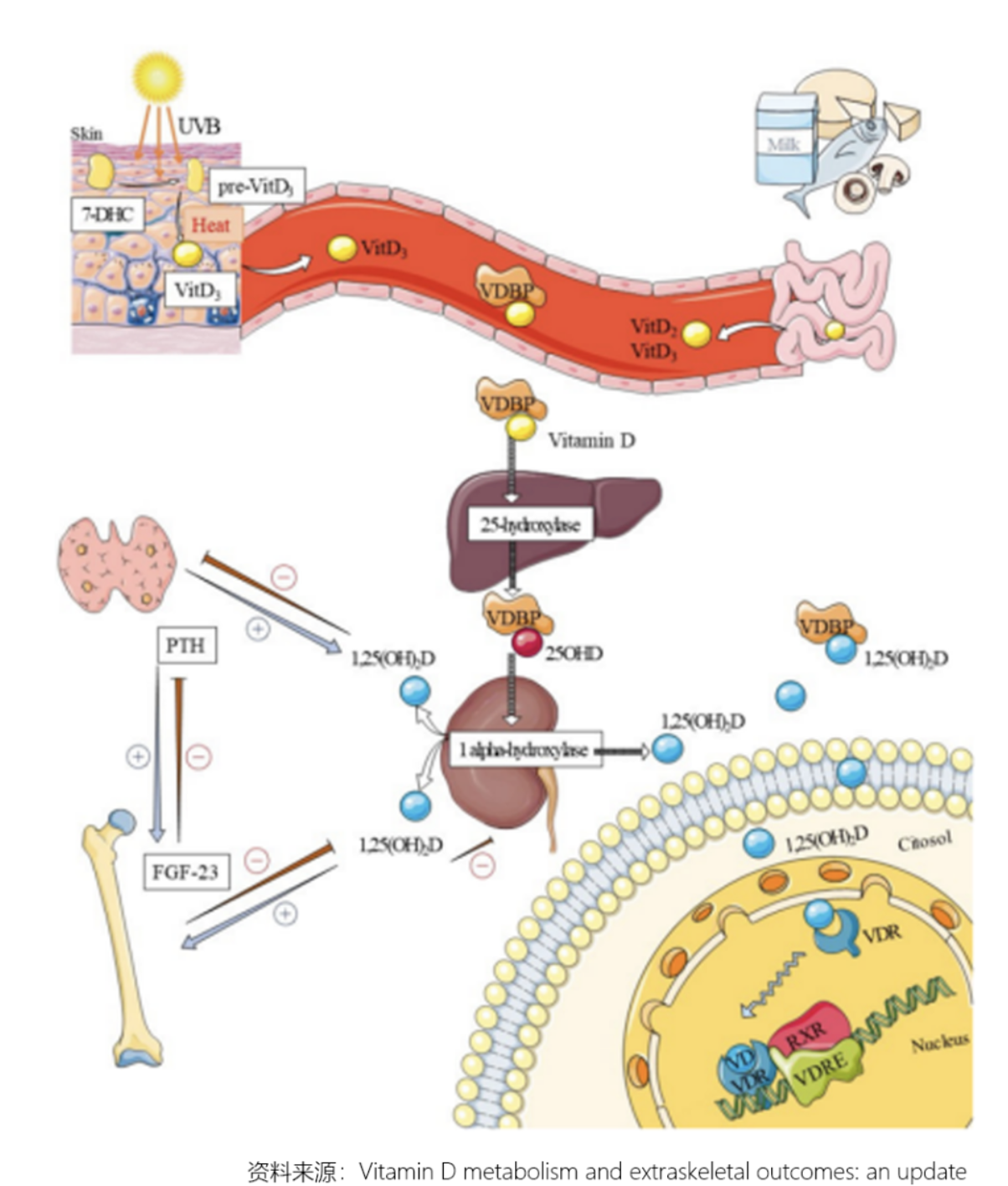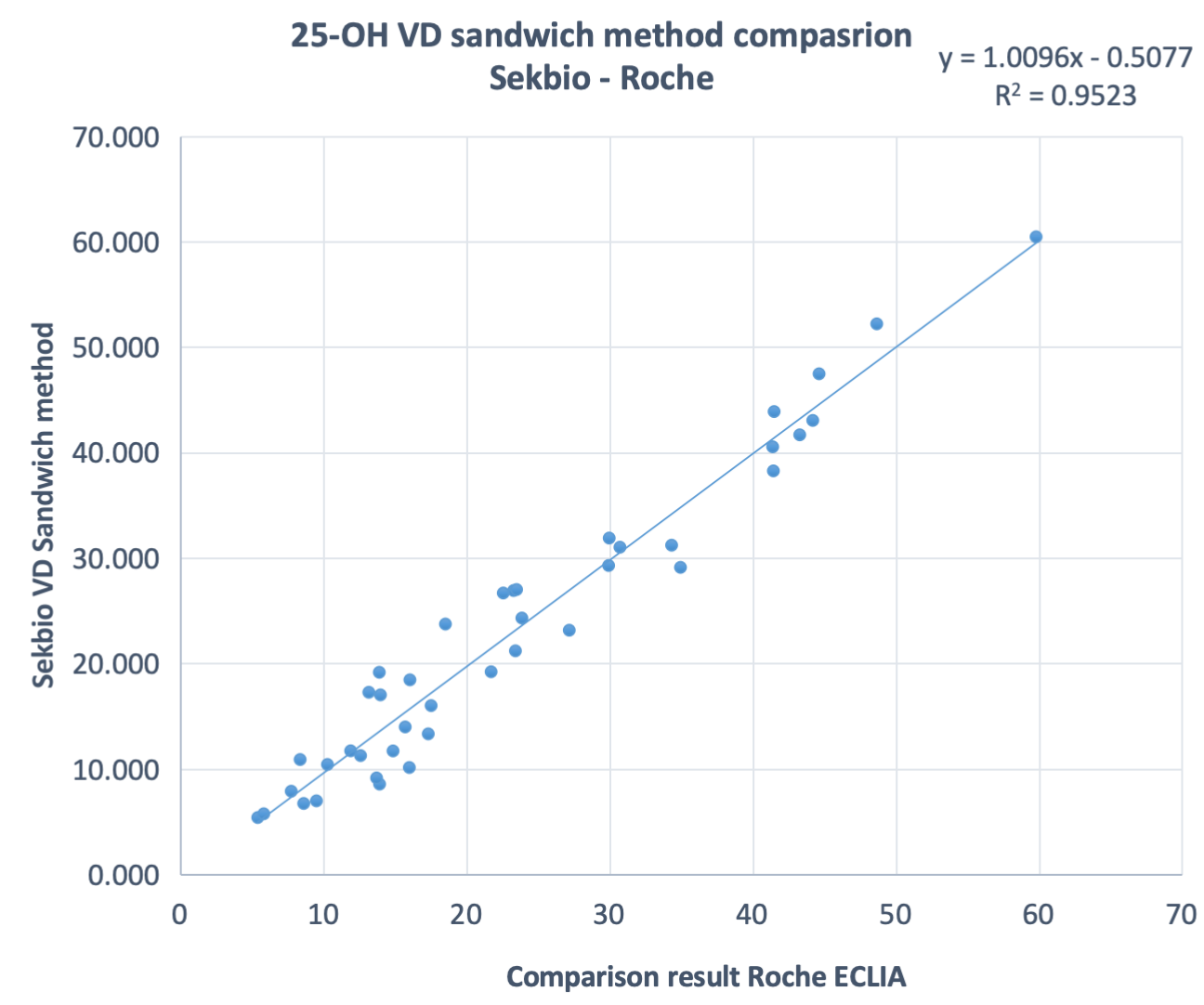The advantage of the 25-OH vitamin D sandwich immunoassay based on Sekbio’s VD sandwich antibody pair
Content :
Part 1: The introduction of vitamin D metabolism pathway
Part 2: The disadvantage of the traditional competitive method
Part 3: The advantage of sandwich method on VD detection
1. The introduction of vitamin D metabolism pathway
The metabolism pathway of vitamin D involves several steps, with the primary starting point being synthesis in the skin. Here are the main steps in the metabolism pathway of vitamin D:

Skin Synthesis: The main precursor of vitamin D is 7-dehydrocholesterol, which is present in the skin. When the skin is exposed to ultraviolet B (UVB) radiation, 7-dehydrocholesterol is converted into pre-vitamin D3.
Liver Conversion: After entering the bloodstream, pre-vitamin D3 is converted by enzymes in the liver to 25-hydroxyvitamin D3 [25(OH)D3], also known as calcidiol.
Renal Activation: 25(OH)D3 is subsequently converted by enzymes in the kidneys into the active form, 1,25-dihydroxyvitamin D3 [1,25(OH)2D3], also called calcitriol. This is the final activated form of vitamin D.
Actions of Vitamin D: Active vitamin D, through binding with the vitamin D receptor (VDR), influences the absorption of calcium and phosphate, bone formation and maintenance, as well as regulation of the immune system, cardiovascular system, and other physiological processes.
This metabolic pathway is crucial for maintaining bone health and other physiological processes, especially in the regulation of calcium balance and bone metabolism. In the biomedical industry, research on vitamin D involves its roles in bone health, the immune system, and other physiological processes.
2. The disadvantage of the traditional competitive method
DEQAS (Vitamin D External Quality Assessment Scheme) is a globally recognized authority for assessing vitamin D testing. DEQAS inter-laboratory quality assessment is one of the authoritative inter-laboratory quality assessments for vitamin D testing laboratories worldwide. According to statistical results from DEQAS inter-laboratory quality assessments, immunoassay is the most widely adopted method for clinical detection of 25-OH-VD.
With the emergence of time-resolved immunofluorescence, electrochemiluminescence, and other detection technologies, the sensitivity and specificity of immunoassays have improved. However, due to the inherent limitations of small molecule immunodetection methodologies and lower antibody specificity, there is still a significant disparity between immunoassay results and LC-MS/MS detection results.
Poor Consistency with LC-MS/MS Results
Researchers from the Laboratory Medicine Department of Peking Union Medical College Hospital, Chinese Academy of Medical Sciences, and the Laboratory Medicine Department of China-Japan Friendship Hospital compared 25-OH-VD assays from the five major brands in the market (Abbott, DiaSorin, IDS, Roche, Siemens). They found that the clinical concordance rate of these assays with LC-MS/MS results was less than 71%. When the sample contained 25-OH-VD2, the correlation of results decreased, regardless of the competitive assay method in any CLIA system.
Suboptimal Identification of 25-OH-VD2
The correlation of results between competitive assays and LC-MS/TS results decreased when the sample contained 25-OH-VD2.
Low sensitivity
The detection accuracy decreases when below 20ng/mL
3. The advantage of sandwich method on VD detection
The sandwich method for 25-OH VD can circumvent the challenges present in the competitive method. Excellent diagnostic performance show on Sekbio’s immunoassay, good correlation result between Sekbio and Roche’s VD result.
25 OH Vitamin D Sandwich antibody pair are available from Sekbio Now, appliable for vitamin d (VD) sandwich ELISA, vitamin d rapid test, VD CLIA.

Related Immunoassays
- Cardiac Markers
-
Tumor Marker
-
PGII
-
G17
- CA50
-
CA125
- CA242
-
CA15-3
- CA19-9
- CA72-4
-
Pepsinogens I (PGI)
-
Human Epididymis 4 (HE4)
- Prostate-Specific Antigen (PSA)
- Squamous Cell Carcinoma (SCC)
- Neuron-Specific Enolase (NSE)
- Cytokeratin 19 Fragment (CYFRA21-1)
- Human Progastrin-releasing Peptide (ProGRP Tumor Marker)
- Protein Induced by Vitamin K Absence or Antagonist-II (PIVKA II Tumor Marker)
- Alpha-fetoprotein(AFP)
-
CEA
-
Human Chitinase 3-like 1
-
PGII
- Inflammatory Marker
- Infectious Disease
- Hormones
- Thyroid Function
- Glucose Metabolism
- Bone Marker
- Others
-
Heterophilic Blocking Reagent
- Animal Diagnostics

















